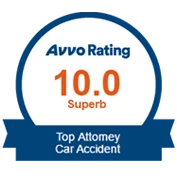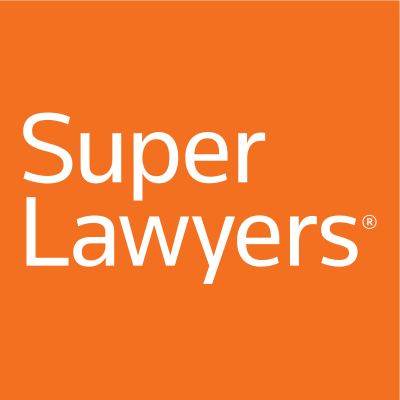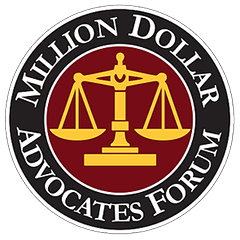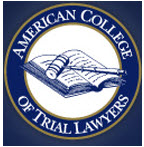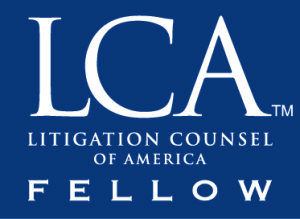
Successful Settlements Frequently Asked Questions
After a successful settlement, you may have many questions, including “When will I get my check?” Essentially, the nature and complexity of your claim will determine the answers to your questions. However, some basic information can be helpful when navigating a personal injury settlement.
Talking to an experienced personal injury attorney is the best way to get a sense of what to expect from the settlement process. If you’ve been injured due to the negligence of another, call Maggiano, DiGirolamo & Lizzi at (201) 585-9111(New Jersey) or (212) 543-1600 (New York) for a FREE case evaluation. We will help you pursue a successful settlement and the compensation you deserve for your injuries.
Things to Know About Lawsuit Settlements
We’ve compiled a list of frequently asked questions about successful settlements to keep our clients informed of the process. Know that if you have questions besides those here, our personal injury lawyers are ready to help.
How Do I Collect a Lawsuit Settlement?
Many plaintiffs expect to walk away from the table with cash in hand after a successful settlement. However, the actual payment process can take some time, especially for larger settlements.
After the claim is settled, the defendant must get a check from their insurer by a certain date. Your attorney might also need to take care of medical or insurance liens before the final amount is given to you. This can take some time when it involves Medicare, Medicaid, or difficult insurance agencies.
What Are the Steps to Receive a Lawsuit Settlement?
Once you’ve reached a successful settlement agreement in a personal injury lawsuit, there are a few steps before you receive your funds:
1. Settlement Agreement & Release
Both parties will need to sign a settlement agreement, which outlines the terms of the settlement, including the amount to be paid. In addition, you’ll likely sign a “release” which prevents you from filing any future claims related to the same incident.
2. Waiting Period
After the agreement is signed, there’s typically a waiting period while the defendant or their insurance company processes the payment. This can take a few weeks to several months, depending on the specifics of the case and the terms of the agreement.
3. Payment
The defendant (or more commonly, their insurance company) will send a settlement check to your attorney. It’s generally payable to both you and your attorney.
4. Attorney’s Fees & Expenses
Your lawyer will deposit the check into a client trust account and deduct their fees and any outstanding expenses related to your case (like filing fees, costs of obtaining medical records, expert witness fees, etc.).
5. You Receive the Remainder
Once all fees and expenses are accounted for, your lawyer will issue you a check for the remaining balance.
It’s important to note that the settlement amount may be subject to taxes. Also, if you have outstanding medical bills or liens (for example, from health insurance or Medicaid/Medicare), these may need to be paid from the settlement amount as well. A knowledgeable personal injury attorney can help navigate these complexities.
In the unfortunate event the defendant doesn’t pay as agreed, further legal action may be required to enforce the settlement agreement. Always consult with your lawyer regarding the specific circumstances of your case.
What Are the IRS Rules on Lawsuit Settlements?
The majority of personal injury settlements are not taxable, based on federal tax laws (IRS Publication 4345). If you receive a settlement for personal physical injuries or illness and/or mental anguish or emotional distress stemming from a physical injury or illness, your recovery will generally not be taxed. In instances where the tax laws are more complex, it is best to consult your personal injury lawyer with any related questions.
What Do You Need To Have A Successful Settlement?
Achieving a successful settlement in a personal injury case typically depends on several factors:
Evidence of Liability
To reach a favorable settlement, you’ll need clear evidence that the other party was at fault for your injury. This can include photos or videos of the accident scene, witness statements, police reports, expert testimony, and more.
Medical Documentation
Detailed medical records that clearly link your injuries to the accident are crucial. This includes initial emergency room visits, treatments, surgeries, medications, therapies, and any future medical needs related to the injury.
Proof of Damages
Keep thorough records of all expenses related to the injury. This can include lost wages, out-of-pocket expenses, and costs associated with any changes in your lifestyle or ability to perform everyday tasks.
Legal Representation
Hiring an experienced personal injury attorney can greatly improve your chances of a successful settlement. They can navigate the complex legal process, negotiate effectively with insurance companies, and advocate for your best interests.
Patience
Successful settlements often require patience. Insurance companies may attempt to drag out the process, hoping you’ll accept a lower offer. Being willing to wait can sometimes result in a better settlement.
Willingness to Go to Trial
Even though most cases settle out of court, showing a willingness to go to trial if necessary can put additional pressure on the other party to offer a fair settlement.
Remember, each case is unique, and outcomes can depend on a variety of factors. Consulting with a skilled personal injury lawyer can provide guidance tailored to the specifics of your case.
What Is the Best Way to Negotiate a Settlement?
Negotiating a settlement effectively requires strategy, evidence, patience, and skillful representation.
It is important to understand your case’s worth, including assessing economic and non-economic damages. This valuation guides the settlement range you should consider acceptable.
Then, gather solid evidence. This includes:
- Medical records
- Accident reports
- Witness testimonies
- Any other documents that support your claim and establish liability
Evidence is crucial in strengthening your position during negotiation.
The first offer from the opposing side is typically lower than what they are willing to pay. Insurance companies are much more concerned about their bottom line than your losses. You should be prepared to reject their initial offer politely. Patience is key here; negotiations may go through multiple rounds before reaching an agreement.
Hiring an experienced personal injury attorney is highly recommended. Their expertise can be invaluable in effectively negotiating and achieving a successful settlement for your claim.
How Long Do Most Settlements Take?
The timeline for reaching a successful settlement in a personal injury case can vary significantly depending on the specifics of the case. Generally, it can take anywhere from a few months to several years to settle a personal injury claim.
Factors influencing the timeline of your settlement include the complexity of the case, the severity of the injuries, the clarity of liability, the willingness of the parties to negotiate, and the backlog of the court system if a lawsuit is filed. If the injured party has not yet reached maximum medical improvement (the point at which their condition cannot be improved any further), it may be advisable to wait before settling, which can extend the timeline as well.
The negotiation process itself can also take time. Initial offers from insurance companies are often lower than the actual value of the claim, leading to a series of counteroffers. Moreover, if settlement negotiations fail and the case goes to trial, the process can take significantly longer due to court scheduling and legal formalities.
Therefore, while some straightforward cases can settle in a few months, complex cases can take years to reach a conclusion. Consulting with an experienced personal injury attorney can provide a more tailored timeline.
Reach a Successful Settlement with a Personal Injury Lawyer
If you’ve been injured due to the negligence of another and you wish to pursue compensation for your losses, consulting a personal injury attorney is in your best interest. A knowledgeable and practiced personal injury attorney can help you to negotiate a successful settlement.
At Maggiano, DiGirolamo & Lizzi, we are courageous in pursuing justice for our clients. We can guide you through the settlement process, helping to ease your anxieties while we seek the appropriate compensation for your losses. We serve clients in both New York and New Jersey. Contact us today for a FREE consultation.







